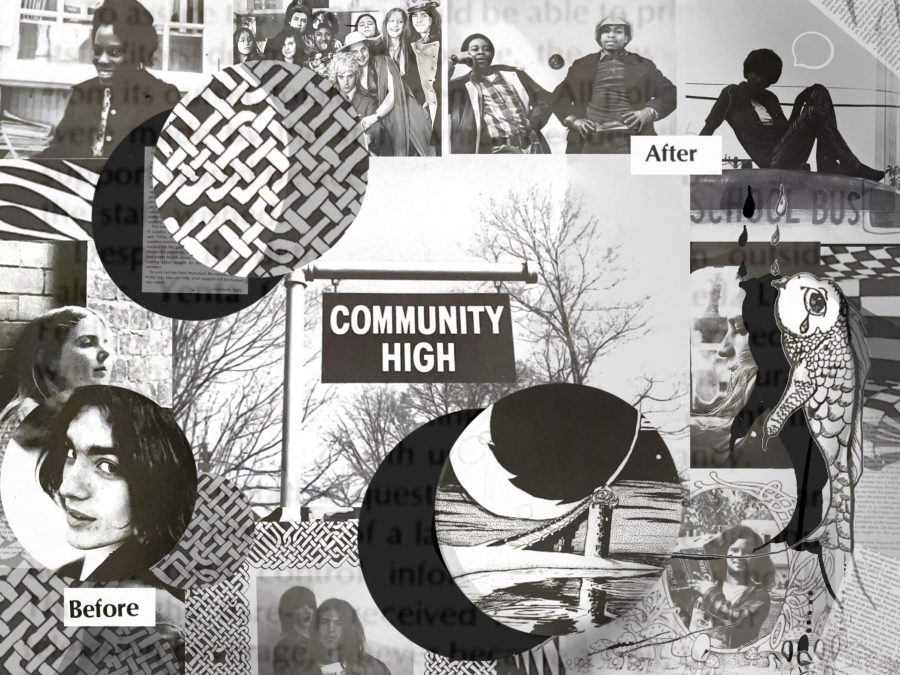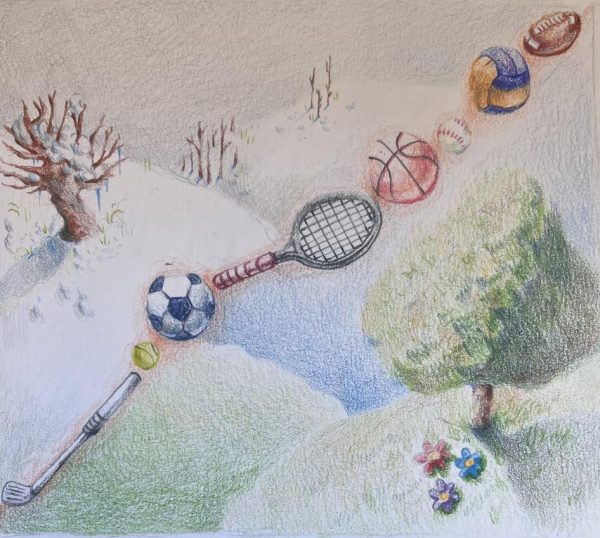Staff Editorial: An Ode to Community
Community High School has always been an experiment. To sustain our school’s unorthodox and unexpected success, everyone at CHS must appreciate the fragile nature of its identity.
At its inception, CHS was never meant to be this successful. We were never meant to outscore Ann Arbor’s traditional public schools on standardized tests. We were never meant to win the Blue Ribbon award. We were never meant to annually send students to the Ivy League. But, we do.
In 1972, Ann Arbor Public Schools (AAPS) founded CHS to combat overpopulation throughout the district and test Superintendent Bruce McPherson’s “schools without borders” philosophy. According to former staff and students, this strategy initially resulted in a school full of “hippies,” a place where Pioneer High School and Huron High School could dump their “troublemakers” and “clean out the jails.”
Nevertheless, this founding group created an identity that embraced CHS’ external community — in Kerrytown, the University of Michigan and Ann Arbor — to strengthen its internal community — in forums, classrooms and clubs.
However, in 1994, all of this progress was nearly scribbled over, crumpled up and thrown out.
That year, Ann Arbor held local elections for the school board. Despite prospective students camping outside of CHS for 96 hours just to enroll, three incumbent candidates accused the school of draining the district’s resources. They supported drastically cutting the school’s funding while increasing the school’s enrollment. If implemented, it was all but certain that these policies would overburden CHS and destroy the school that we love today. Thankfully, these candidates were met with stark resistance.
In April of that year, Ann Arbor Students for Political Action — a student-led group of 150 AAPS high schoolers — registered with the Washtenaw County Clerk’s office and officially became a political action committee. Immediately, they began fundraising and endorsed three opposition candidates who supported the “personalized education” that students received at CHS and other alternative schools in the district: Diane Hockett, Nicholas Roumel and Ann Lyzenga. That June, with the fighting spirit of CHS’ own students, they flipped control of the school board.
Now, 28 years later, CHS is facing another pivotal moment. With the rapid departure of 16 staff members in four years; many of CHS’ core traditions sidelined because of Covid-19 precautions; and three grades experiencing their first full, in-person year of high school, it is easy to worry that CHS’ identity will never be the same. To a certain extent, this is true. However, change is not necessarily a bad thing. As we wrote, designed and published this issue, we found three elements of our school’s history that we hope everyone at CHS rediscovers. In doing so, we can all examine CHS’ current culture and construct our future identity.
Make the Community Resource (CR) program widely available.
In 1973, CHS’ entire enrollment consisted of 413 students taking a whopping 550 CR courses. Today, this number has flipped: 516 students taking only 115 CRs. We must reaffirm our former level of commitment to the program, because the opportunity to learn outside of the four walls of a traditional classroom — at the University of Michigan, the Neutral Zone or elsewhere — is precisely the type of boundary-breaking experience that all CHS students should have.
Emphasize the importance of tight-knit forums.
In the mid-1970s, forum was CHS at its finest. Students had forum two hours a day, five days a week, and it anchored a typical schedule at CHS. To be clear, we don’t believe that forums should return to this historical model; however, they should return to their pre-pandemic purpose. The valuable time spent in forums should be focused on recreating a place for staff and students to seek candid advice and form deep friendships.
Create new traditions and carry on old ones.
We recognize that public health considerations prevent a full-blown return to the original format of many CHS celebrations. However, this shift will be temporary. In the near future, we must revitalize our old rituals and create new celebrations. Previously, those subtle, in-between interactions during Field Day, Commstock, Soul Food Wednesday and MultiCulti taught new students and staff the unique essence of CHS. Unfortunately, these are moments we have lost during the pandemic. But the hard work of recreating them is necessary to uplift us and our school’s identity.
On their own, all three of our propositions are simple. But, together, they work in synergy with one another. This collective embrace of the CR program, forum time and CHS traditions will help steer our school’s identity back to its revolutionary roots and continue our compelling underdog story.













